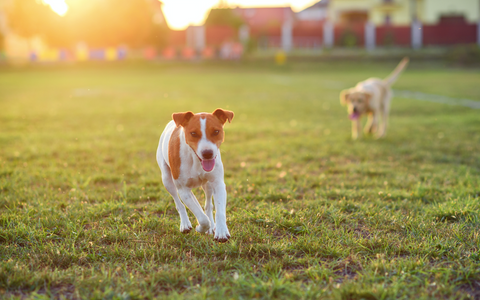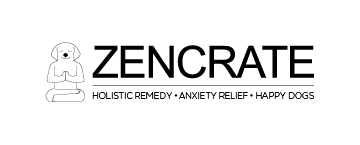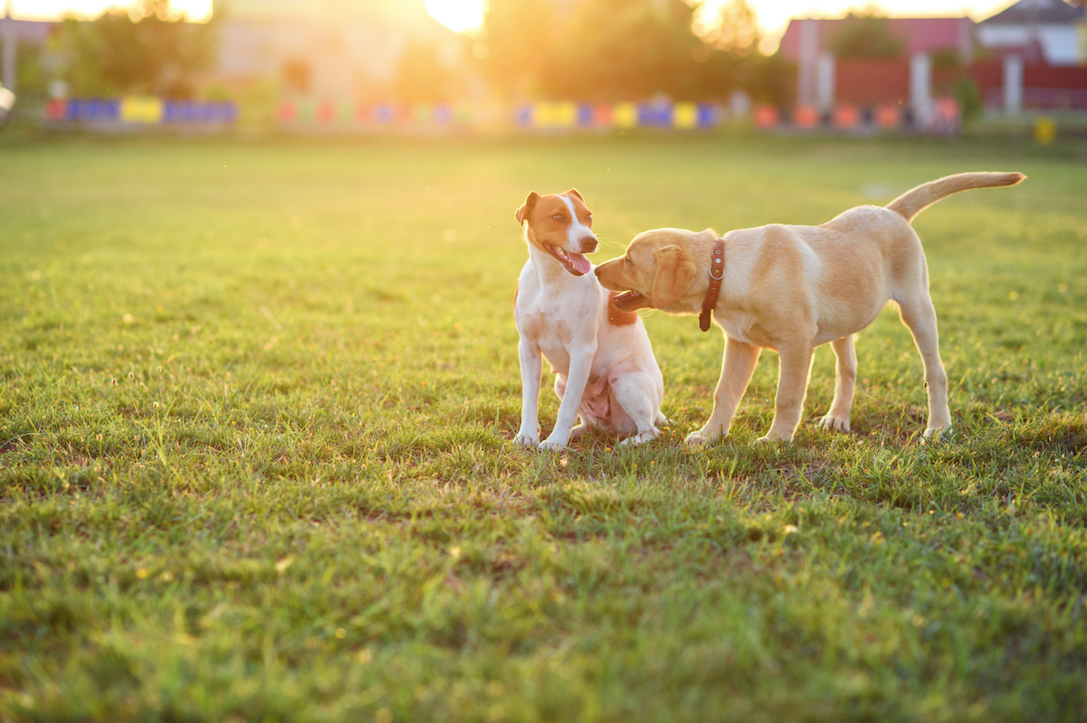Why Do Dogs Hump (& How Can I Stop It)?
By TB Thompson, DVM
Most dog lovers dream of having a brave, dignified, and smart dog. You've probably pictured Lassie, Benji, or Otis. You've never once pictured sitting down to Thanksgiving dinner with Grandma and the kids only to look over and see your puppy vigorously humping his stuffed animal toy. Veterinary clients frequently ask, "Why do dogs hump each other/toys/people?”
Animal behaviorists prefer the term “mounting” over humping or hunching, but we all know what it means. A dog jumps up on another dog, person, or inanimate object with his/her front legs and starts pelvic thrusting.
Some people think the behavior is funny while others find it embarrassing or even offensive. Why do dogs engage in this strange habit and should you try to stop them?
Normal Behavior
Most dogs will mount or hump something at some point in their lives. Male dogs are more likely to hump, but females do it, too. It doesn’t matter if a dog is neutered/spayed or not, they still go through the motions of expressing this instinctual behavior. There are situations that may bring on an increase in mounting...

Anxiety/Excitement
Humping can be a displacement behavior. Displacement behavior is “the performance by an animal of an act inappropriate for the stimulus or stimuli that evoked it.”1 Dogs and puppies who experience some internal conflict turn to unexpected activities to calm themselves.
For example, a dog who is caught up in the excitement of a visitor in the home might feel excitement and anxiety. She might hump her bed, toys, or another dog in an effort to calm herself. Kind of like people who chew their fingernails when they're nervous. Dogs will also mount another dog or humans just to get attention.
Anxiety from being punished is a common trigger of humping in dogs. Again, the dog is experiencing internal conflict–on one hand he wants to engage in chewing up the rug. On the other hand, he wants your approval. The internal conflict may be soothed by humping his doggy bed. Think of it like a kid hugging himself and rocking after his mom yelled at him for tracking mud into the house.
Sexual
Like it or not, dogs are born to reproduce. They are driven by primitive urges just like humans. Sometimes humping and pelvic thrusting happens just because it feels good. This form of dog mounting is normal but can become compulsive. Sexual behavior problems occur in about half of dogs studied with behavior problems.2 Although it’s not dangerous, many people prefer to minimize the behavior. Especially in front of Grandma!
Having intact (un-neutered or un-spayed) adult males and/or females in the same home usually increases the likelihood of mounting behavior. It’s not unusual for dogs to mount another dog of the same sex. Neutering intact dogs may decrease the behavior in some dogs, but not all of them.3 If you’ve tried everything else to curb excessive humping, spaying and neutering is worth a try.
Dominance
Dogs normally have a hierarchy of status amongst themselves. They have to figure out who is top dog and has most access to resources like food, toys and attention. Dog mounting can be an act of dominance of one dog over another. In this case, it’s not sexual but more a form of communication.
Keep in mind that some dogs may take offense to being mounted by a stranger. Fights can break out when you least expect them. Keep an eye out for trouble at dog parks if your dog is known to mount others.
Dogs who also hump toys or pillows in addition to humping other dogs are probably not trying to establish dominance. They are more likely expressing anxiety or the desire for sexual stimulation.
Play

Mounting is a normal part of play between dogs. It’s natural for a puppy to mount her friend during play. Play mounting is also normal in adult males and females. Again, it makes no difference if the dog is intact or neutered. Play mounting is widespread amongst all dogs.
Sign of Health Problem
You might be surprised to learn that certain health problems can lead to increased humping behavior. Irritation of the urinary tract, digestive tract or skin have been correlated to mounting and humping activity in dogs. It’s thought that dogs are seeking to relieve itchiness or irritation they feel from inflammation. Some of these dogs will even “hump the air” and may look uncomfortable.
How to Deal with Excessive Mounting/Humping in Dogs
1. Pay attention to when the dog is most likely to engage in humping behavior.
Ask yourself:
- Is he playing with another dog? How does the other dog respond?
- Is he anxious or frightened?
- Is he mentally excited, or “hyped up” before the behavior starts?
- Is he bored?
- Does he show symptoms of skin, urinary, or bowel problems?
2. Get a complete veterinary physical exam. Consider having a blood and urine panel run to check for health problems.
3. Improve your dog’s quality of life with increased exercise, training in the form of fun games, and outings away from home. Redirecting your dog’s attention to another pleasurable activity should help decrease his interest in humping.
4. Consider spaying or neutering your dog. Although this is not guaranteed to stop mounting behavior, is helps in some cases. If your dog is humping because of anxiety or fear, neutering is not likely to help.
Encyclopaedia Britannica. Displacement activity. https://www.britannica.com/topic/displacement-activity
Vet Clin North Am Small Anim Pract. 1997 May;27(3):601-15. Sexual behavior problems in dogs and cats. Houpt KA1. https://www.ncbi.nlm.nih.gov/pubmed/9170637
J Am Vet Med Assoc. 1997 Jul 15;211(2):180-2. Effects of castration on problem behaviors in male dogs with reference to age and duration of behavior. Neilson JC1, Eckstein RA, Hart BL. https://www.ncbi.nlm.nih.gov/pubmed/9227747


